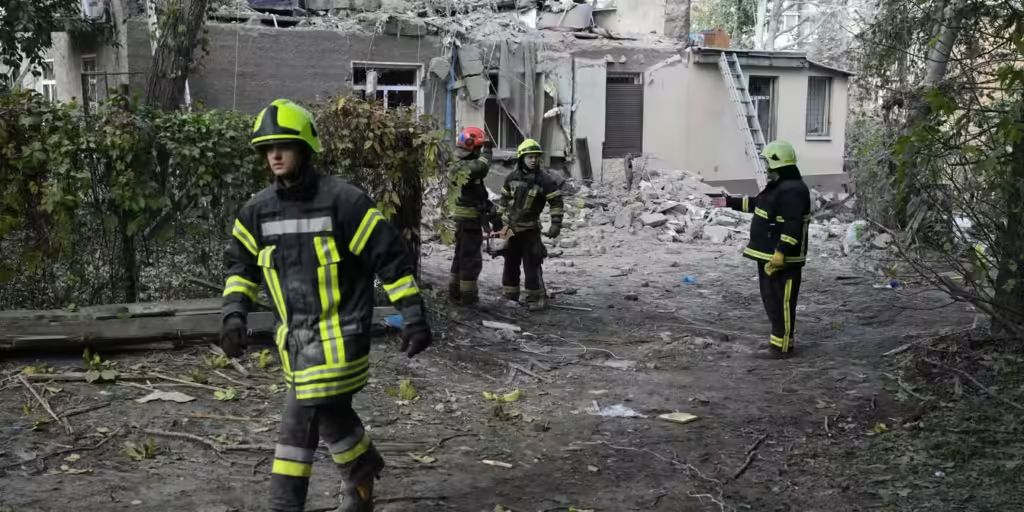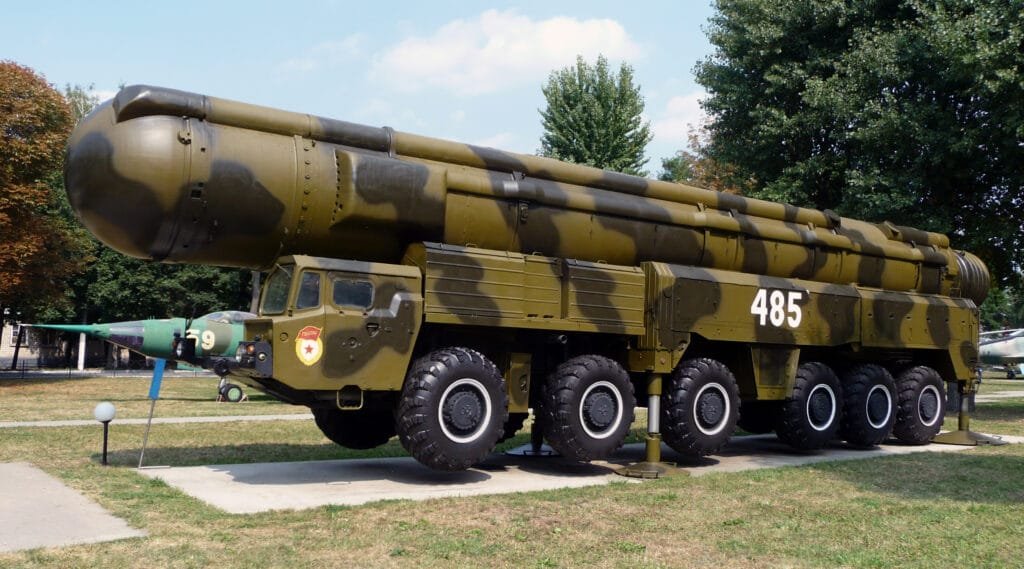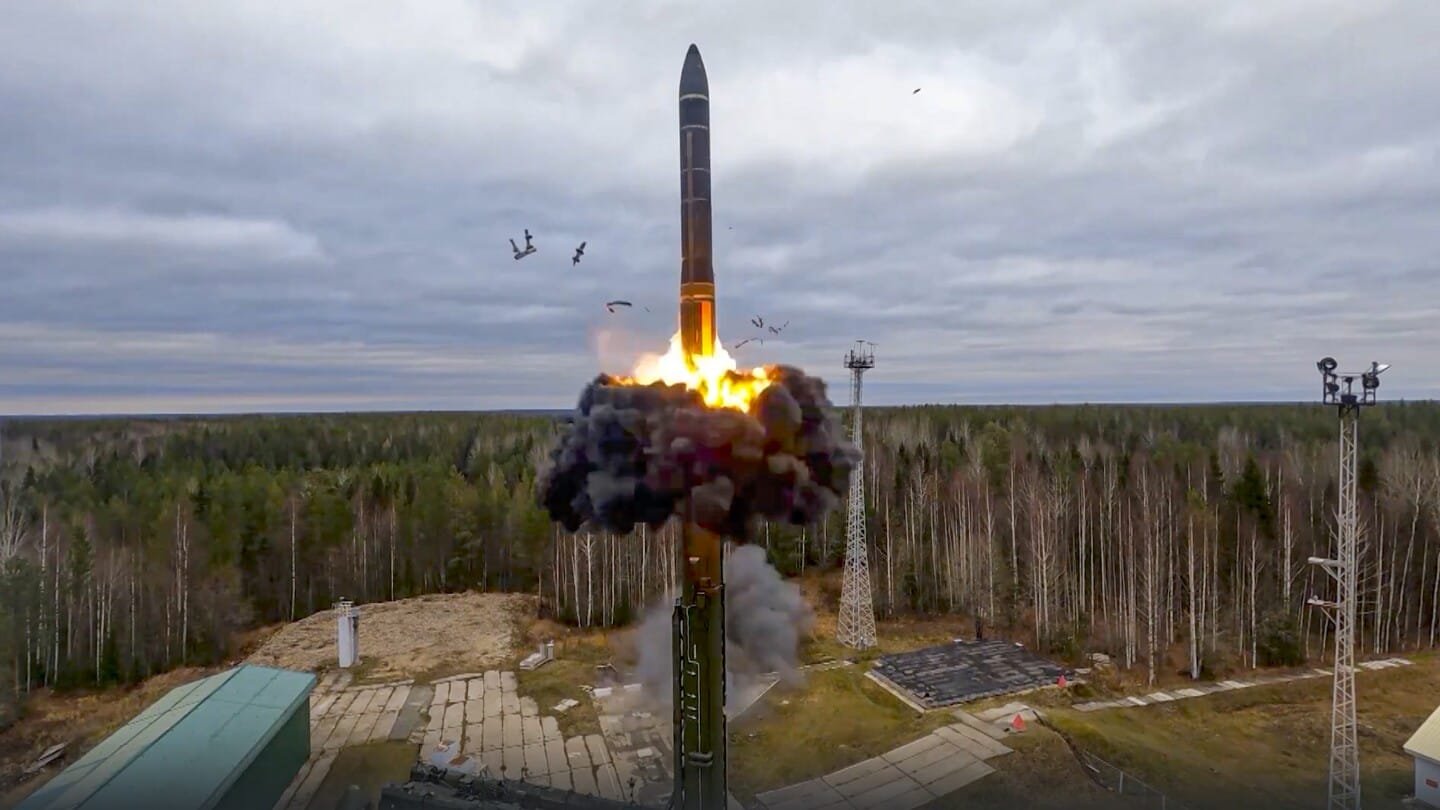| In Short |
| · ICBM Deployment in Ukraine: Russia launched an RS-26 Rubezh intercontinental ballistic missile (ICBM) targeting critical infrastructure in Dnipro, marking a significant escalation in the conflict. |
| · RS-26 Rubezh Overview: This road-mobile ICBM, capable of carrying nuclear or conventional warheads, has a range exceeding 5,500 km and features multiple reentry vehicles. |
| · Damage and Impact: The missile caused extensive damage to industrial facilities in Dnipro, while additional cruise missiles were intercepted by Ukrainian defenses. |
| · International Concerns: NATO and EU members condemned the escalation, highlighting fears of potential nuclear escalation and global security risks. |
| · Strategic Implications: The use of an ICBM shifts the military dynamics of the conflict, raising questions about strategic stability and the need for global intervention. |
Reports came to light on November 21, 2024 that Russia had fired an intercontinental ballistic missile (ICBM) at the city of Dnipro in Ukraine. It is a very massive escalation, marking the first instance of ICBM use which has been visibly corroborated and confirmed in this conflict. The missile is believed to be the RS-26 Rubezh, designed to carry conventional and nuclear warheads.
The RS-26 Rubezh: About the Missile
The RS-26 Rubezh, under its NATO name SS-X-31, is a Russian solid-fueled intercontinental ballistic missile developed by the Moscow Institute of Thermal Technology. The range of the missile is beyond 5,500 kilometers and is equipped to carry multiple independently targetable reentry vehicles (MIRVs). The missile itself is road-mobile, giving it an added strategic advantage in deployment.

Description of the Missile Strike
The RS-26 Rubezh was reportedly launched from the Astrakhan region in Russia and targeted important infrastructure in Dnipro, according to Ukranian military sources. The attack also included the launching of seven Kh-101 cruise missiles, six of which allegedly were intercepted by Ukrainian air defenses. However, the RS-26 did reach its target, and industrial facilities there were significantly damaged, injuring at least two people.

Context of the Escalation
This missile strike comes as a result of a series of events that have heightened the tension between Russia and Ukraine. Specifically, Ukraine has recently used long-range missiles to hit targets within Russian territory, including both the U.S.-supplied ATACMS and the British Storm Shadow missiles. The actions raised warnings from Moscow, which said such attacks would be considered a major escalation.
International Reaction
It deeply concerns the international community that Russia has used an ICBM in the conflict. The European Union characterized the attack as a “clear escalation,” noting the serious implications of such a weapon. NATO allies have voiced a growing level of apprehension, with some member states demanding increased support to Ukraine after the action taken by Russia.
Significance of Deployment
The RS-26 Rubezh deployed in Ukraine has the following significant implications:
- Military Dynamics: An ICBM introduces a new dimension to the military abilities in the conflict, which may change the strategic calculations of both sides.
- Nuclear Concerns: The RS-26 was reportedly armed with a conventional warhead, though its ability to carry nuclear payloads gives rise to apprehensions over the possibility of nuclear escalation.
- Global Security: This incident will precipitate a reevaluation of global security arrangements concerning ballistic missile proliferation and use.
History
RS-26 Rubezh has been under international spotlight since it was being designed. Critics had often claimed that its utilization would contravene the INF Treaty due to its range profile. Russia, however, had been assuring the global community that it conforms to all international agreements on warfare .
Conclusion
Russia’s use of the RS-26 Rubezh ICBM in Ukraine would represent a significant turn in the current conflict, with profound repercussions in the region and beyond. The international community is therefore challenged by addressing this development to prevent further intensification and pursue the principles of international law and stability.
For Latest News Updates Click Here
